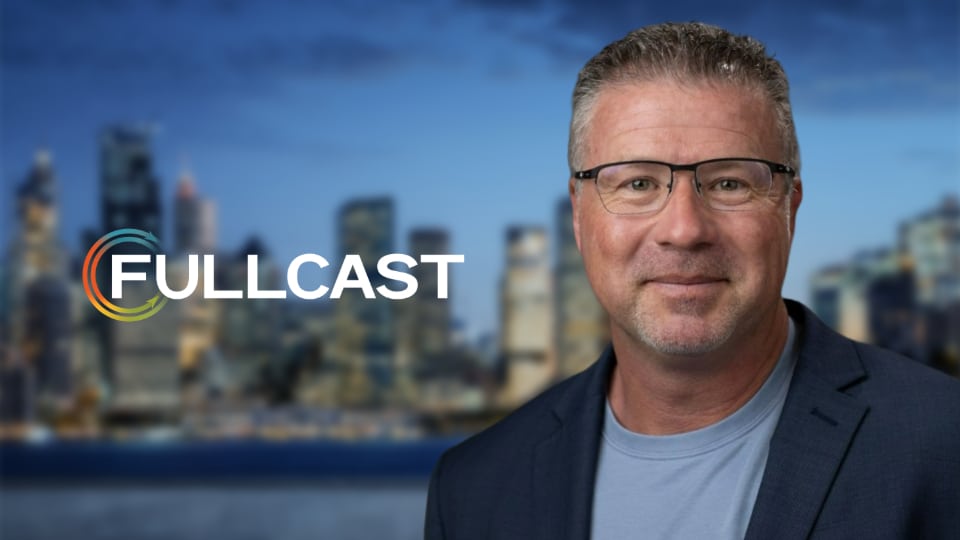Introduction
David Zwerin is currently the Senior Director of Sales Operations at Iterable. He’s been in sales operations leadership for over 10 years and he’s got a great wealth of knowledge on the topic of Capacity Planning and Headcount Optimization.
In this chat, we discuss:
- David’s background in sales operations
- How Finance and Sales teams collaborate in headcount planning
- The challenges of collaborating with stakeholders in headcount planning
- How to calculate ramp time
- How to keep headcount planning aligned with growth and fluctuating market conditions
- How frequently to adjust headcount numbers
- Key metrics to assess your headcount plan
- How to communicate the headcount plan with your team
- How far in advance to start planning
- The differences between planning in Excel vs an app
- How to work with HR on capacity planning
Transcript
[This transcript has been edited for readability]
[0:28] Tell us about your background in Sales Operations and your experience with Capacity Planning.
Dharmesh: Welcome, David. I have really been looking forward to this discussion for a while. So it’ll be great if you could share a little bit of your background and how you look at Capacity Planning historically, and then we can dive right into all the nuts and bolts.
David: Yeah, absolutely. Well, it’s great to be here. So thank you for inviting me and talking about this topic because it’s an important one, especially right now. So my background is after leaving business school, I found sales operations and field operations at a time when it was an emerging role within growth organizations, primarily technology organizations, at least for me.
So when I joined the company called Lithium Technologies — it’s now been acquired and actually spun out and it’s a whole other new company now — but my background has been in these kind of high growth organizations, SaaS businesses that have kind of varied in size and also varied industries, but typically have always kind of centered around that kind of common go-to-market motion.
When I started working at a Lithium, we were a Series C at the time and went up to obviously a Series Z and then to exit. And same with a couple of other companies after that. So smaller companies, more mature companies, as well, and then I drove TripActions and now I’m at Iterable.
But the common thing that I really enjoy is at that place of the intersection of where the growth happens. So where is the company starting to accelerate? How do you put a plan in place to think about increasing headcount with additional investment, or thinking about expanding into different market verticals or other markets, like geographic region? So all the things that companies contemplate: when to do that, what are the indicators that say now is the right time, or we’re not quite there yet.
[3:16] Who leads the headcount planning discussion – is it finance or sales? And how does a company’s growth stage impact this?
Dharmesh: So as you think about the different stages of growth, do you see any difference in who’s actually leading the headcount planning discussion, whether it’s finance or sales, or like how does it get started?
David: Yeah, well, in series C it’s more of a round table conversation that happens with finance, and it happens with the sales leader in terms of how we can actually go to market to create a capacity plan to hit some of our targets? Bottoms up modeling: how does that work? We really do need to think about segmentation. If you’re a series C it’s more of a kind of a collaboration around, are we ready? And not only are we ready from an investment standpoint, but like the products that we have, and I know that this is a common theme that’s coming up in the market, is that product readiness: Are we ready to actually turn on some international expansion? But the people that drive that decision are primarily the sales leaders and the finance leaders
[5:24] What are the challenges that sales leaders and sales teams face when collaborating with other stakeholders to make a capacity model?
Dharmesh: What are the challenges that you’ve seen for sales leadership and sales teams in general, when they start collaborating with finance, that you would sort of caution people to think ahead about?
David: Yeah. I mean, I think that the inputs are really important in that model. I would say that the label that operations often gets that, are you driving the business by a spreadsheet, or are you actually driving it by market conditions, or by what is actually happening within your company and your culture? And I think oftentimes for me, I do not like that notion of driving it by a spreadsheet. I’ve seen it happen at private equity firms that come in and acquire a company and they just have that financial model from an operations lens [and may ignore important inputs.] The most important part of the inputs are things like ramp time. How do you think about being conservative? Or are you being aggressive? Have we proven out that ramp or is that just a modeling exercise? For example, if you’re bringing in, let’s say your mid-market reps, which is obviously between enterprise and maybe an SMB, do you have that right ramp and those assumptions, are they actually data-driven or are you trying to get more aggressive with those?
The other thing that’s also really important is that there’s attrition, right? So one of the things that happen is that you actually have positive attrition promotions that do impact capacity. Also, you have negative attrition if people are leaving the business and that’s common, as people do have career changes and life is happening, especially now during COVID. But one of the key things is that in those models, you have to be able to kind of really look holistically at all of those types of inputs and changes because it can really throw off a plan.
[7:41] How do you calculate your ramp numbers?
Dharmesh: So how do you get to that number? Most organizations I’ve known, they will create a ramp model but generally, more often than not, they’re actually not able to validate whether the ramp model is accurate. There are different ramp profiles according to industry or market. But how do you get good data for that? I mean, do you spend more time with managers and really getting their feedback?
David: Yeah. We do actually look at it by segment because it’s different. Because obviously, we have key assumptions around our funnel metrics in terms of average sales cycle life and number of opportunities people should be building. And also there’s a whole onboarding process of learning our product and the value prop, and so they’re not going to be effective for a certain period of time. So it’s partly taking an enablement lens, but it’s also taking the math lens of how sales cycle works into it. And then you start modeling out what your ramp is in that segment.
[9:00] How do you keep headcount planning in line with growth aspirations and fluctuating market conditions?
Dharmesh: So I’ll take you back to it, raise a TripActions, TripActions grew like crazy, right. I’m pretty sure every quota, whatever number that you had for the headcount plan, you’re blowing through that and you will live re-adjusting the plan then comes COVID. And it hit the travel industry really hard. So in that kind of scenario, where you like growing like crazy and you know, all coming down either way, the plan is shifting and the market conditions are shifting so fast.
David: Well, that was a very different experience in terms of keeping expectations in line because I think what happened was the business reset. And again we couldn’t continue in the pre COVID world of scale. There’s just no way, obviously there was nobody traveling and there was nobody actually looking for travel management solutions. So the business inherently had to shift for that moment. And that’s a hard thing to do as a business is to pivot. And that’s what ended up happening. And I think, you know there are other organizations, when COVID happened, everybody kind of took a step back to see what was going to happen with our growth model.
And a lot of companies actually did pause hiring because they didn’t quite know how long it was going to take. So my guess is that, you know, 90% of models except for Zoom and companies that were in the service industry, like Doordash and Instacart, went completely the other direction. Every business model had to pause to see specifically where the planning intersection was going to happen to readjust and then take kind of the next step. Once you’ve got a good indication, now’s the time to continue your plan.
[11:30] How frequently do you adjust your headcount plan?
Dharmesh: So as you lead through the growth cycle and the change cycles, how frequently were you carving out territories or doing the re-adjustment exercise? Is it a quarterly thing? Is it an annual thing? What is the process?
David: Yeah, I mean, so again, talking about when COVID happened or just pre COVID?
Dharmesh: Either way, because changes are always happening.
David: Yeah. Yeah. I mean, pre COVID, it depends on your business model. So TripActions is a monthly business. And so we were actually looking at things in a monthly cycle. It was really important for us, how we measured a lot of things and especially around our hiring and go-to-market. Post COVID at inerrable, we did the same thing. We measured monthly, but we’re also looking on a quarterly basis at how things are trending. And then we’d make an adjustment. There are always these fine tuning meetings that you would want, to make decisions to check in on how we are doing, we’re hitting these targets and then now’s the time to think, well, we’re actually kind of at a place where we’re healthy, these KPIs tell us that we’re healthy. And we feel like, okay, now’s the time to kind of, re-engage our plan. And then start moving conservatively into the next phase. And I never want to get too aggressive, obviously, post a pause.
[13:13] What are the key metrics that you look at on a monthly basis?
Dharmesh:What are some of the key metrics that you guys are looking at on a monthly basis? What are the kinds of things that you’re tracking?
David: I think ultimately we want to see what our close-won metrics by segment are, who we’re actually closing and bringing on as new customers. So, what I would call top of funnel and bottom of funnel metrics. So, bottom funnel, like what are our win rates and our average deal sizes — things like that are important. And then top of the funnel, we want to think about what’s the volume of demo requests or leads that are coming through, website traffic, etc from a marketing standpoint. And if we have a lot of top of funnel interests, those metrics start translating down funnel to conversions and obviously more conversations and meetings about our company and our offering.
[14:42] Who are the stakeholders and how much involvement does each group have in the process?
Dharmesh: So who are the stakeholders in the loop, in the sales managers to get input from the field for assumptions and everything else. Like how is finance doing on this side?
David: Absolutely I mean, I think it’s critical. Our sales leaders are the frontline, right? So we have sales leaders, we also have sales managers, but both of those two levels are part of that feedback loop. They discuss: What are they seeing on their team? What are the deal cycles? Where are they starting to reveal?
From a recruiting standpoint, they’re obviously always talking to their networks in terms of changes and movements. So they really have a pulse of what’s going on.
The other stakeholders that are really important are our head of marketing, they obviously have a very strong pulse in terms of what’s starting to happen from an awareness standpoint. I think marketing really helps drive brand recognition that’s out there. And if we’re doing more and we’re engaged with more analysts and we’re doing the right things, the market’s starting to come at us and that really helps start to get those other inputs from the sales managers to feel like, wow, yeah, there’s a lot of conversations that are happening and there’s a lot of good interest in the market about our product.
Dharmesh: Yeah. I think that’s such a vital part, right? Closing the loop with the manager, this is as much, a little bit of an art and a science, right? You’ve got to get their input into the numbers. Like I said, if you run out of private equity, like an Excel driven model, then we can say account planning is super complicated, and it gets complicated because of these nuances of getting managerial inputs. So I think the model there is you running all this through Excel spreadsheet?
David: Our model it’s typically, you know, right now through a spreadsheet or we’re starting to think about planning tools, but mostly it’s been out of a spreadsheet now. In other companies we’ve used other modeling tools that have helped us think about capacity planning and scenarios.
[17:16] How do you manage the process of communicating the headcount number but also ensuring everyone understands how it impacts them?
Dharmesh: So as you think about this, like the other part is like, yeah, you let’s say you are going from 100 to 150 people. Right. And I have manager saying, you’ve got to have 50 more reps. That’s one part – the head count part. Now, the next question you have is – how do we give them the book of business? Are we re-carving territories? Reps get really sensitive, at least in my experience, when you take accounts from them. So, how do you manage that process of communicating to them that not only, this is the headcount number, but this is how it impacts you?
David: Great question. I think it’s a very common conversation to have with the Field Manager and the Directors about how you build trust and about what does make a fair territory? What are the characteristics that say, I have enough accounts in my book of business that I think I could be successful in hitting my number. And I think the feedback loop, again, is so important. At Iterable, we spend a lot of time listening to all the different managers’ feedback. There are some that want to be involved and some that are more transactional. We discuss – these are the markets we want to go after. So there’s obviously some data points that are behind that, but it’s a great question. I think that every segment, especially if you’re working with enterprise reps, they’ve been in their market for several years. And they really kind of know the conversations that they’ve had in the past. They know the brands. They know who the buyers are and what the use cases are going to be.
And so they do have their own signals to say, in our industry, we have customers that sign three to five-year contracts, so where are they in that cycle? So they understand that they can’t break those contracts. And so how we think about putting together an equitable territory is a combination of: here are these ICP fit accounts that you haven’t had a conversation with, and we’re going to start building out an approach in your territory to figure out how to have conversations and then ultimately bring them on.
But again, every kind of segment has their own way, I would say, where we have to figure out what equitable territories look like. And then as we grow 50 more in that segment, here are other industries that we’re going to go after. And especially in COVID, we’ve seen our marketplace organizations, like a Doordash, it’s a conglomerate. They’ve proliferated and they’ve become a huge organization because it’s a service industry and these other organizations are kind of following in their footsteps. So now it’s really starting to emerge. And like, those are the trends that we want to think about as operations. Like how do we bring in those new accounts and how do we start showing that they’re going to need our product to continue to grow and scale as their business starts to evolve.
[21:00] What are the differences you see between a finance-led process and a sales-led process?
Dharmesh: I think you just hit on all the things that I feel passionately about because that’s the biggest distinction I see within a finance led process and a sales led and probably a finance, right? It’s an Excel driven process and you are not able to capture the nuance. Like I said, the enterprise rep knows their territory, which accounts are going to buy, and the propensity of those accounts.
And you need to have that input into the process while you build the number. Historically, have we seen any difference between attainment in a finance-driven organization versus in a place where sales operations is driving this capacity planning discussion?
David: Yeah, I mean in a finance-led organization, it’s a little bit more of a mature model. So you not only are going after new customers, but you’re also going after expansion. And a finance driven model can sometimes really help drive what we think an expansion could be. So like the initial use case was ‘bought their first product.’ They may have three products and they’re like, hey, these are good fits from a white space planning perspective. We think we have this TAM, let’s go put a head count against that. And then people can over perform through not only new logo acquisition, but also having the ones that they initially sold expand. And that is absolutely a great way to grow the footprint of your organization now, like the sales-led planning perspective.
For a revenue operations team, if you’re going primarily off of new logo acquisition, it’s a little bit more of a different planning cycle in terms of what I was talking about. Like, you’re still figuring out the right routes to market. You’re still going from low maturity to mid-level maturity in terms of your product and your organization and your awareness in the market. And those will be successful with a flywheel effect of marketing working and sales doing the outreach. Hopefully you can have a partner agency team or, you know, business development, whatever you want to call it and have that real good go-to-market motion that could potentially create over performance in a sales-driven model.
[24:00] How far in advance do you start planning?
Dharmesh: And as you are now running the process of Iterable, you know we are in Q3, like you mentioned, how early do you start the planning process for next year? Do you approach it only from a next year’s perspective or a couple of years out? What’s the order of operations for you?
David: You can never start too early. And so we’re on a fiscal calendar. So our beginning of the year is coming up in February, 2022. So for us, we’re starting to really think about the order of operations now, and it starts with really looking at the data. Do we, re-look at our ICP? Do we look at what potentials are for expansion and other markets? This is the time to really spend doing your data research and putting in some potential tests. This is the time to try things out. And then in earnest October is when we’re starting to be really deep into planning and data acquisition and data cleansing, and we’re off to the races from a planning perspective and having the right conversations about what our strategies should be.
Dharmesh: You can’t start too early, you need at least three months to get where you are. And so as you’ve been at, Iterable for a little over a year now. Have you seen reforecasting being done or re-planning to be done as you start looking at growth assumptions? Or do you have a plan at the beginning of the year and you guys are tracking to do the plan itself?
David: We’ve been on plan for the year and actually we’ve had amazing growth quarter on quarter. So we actually have a really fantastic story. So, for us to replan, it’s to do more. And so we’re in a really unique situation because of our business model, we’re helping organizations like I mentioned, like a DoorDash who is growing like crazy, and they have a customer life cycle and we help power that customer life cycle from a marketing and awareness standpoint. I think what happens is, through the planning process and the tuning that happens, we have all the dials and now we’re just fine tuning it and figuring out where we want to swim to next.
[27:31] What are the differences you’ve seen between using Excel to do planning versus using an app?
Dharmesh: So, as you have experienced both an Excel driven process and an application driven process, what are the challenges that you’ve seen with either of them, what are the gaps?
David: Change is just going to happen. So you plan for everything, but change is going to happen. It’s like, as we planned last year, how things are working now, we should always have a static plan and then the actuals that kind of come with it. So, that’s really important for the Excel model that you put in place, you really do want to kind of keep that static. The formula driven through a tool is also there and there are a lot of scenarios that can happen. And sometimes in the models that you put in place, as you kind of talked about in the beginning of the call, like you don’t take in some of the assumptions of churn or promotions, like again, you may say I’m going to grow 50 reps, but actually 10 of those reps are going to come from promotions, what happens to their backfill?
So in those models, you don’t typically account for that. And at Trip Actions, we saw a lot of that. We promoted people and which was amazing to be able to do, but you don’t realize that when you promote people, you can lose 10 million dollars in sales capacity a month if you don’t plan the backfill in time. And that’s expensive to backfill with people to get ramped up, to prepare people to promote and come in and take their seat. So, again, it’s a game of scenarios and how you can manage it.
Dharmesh: Yeah. So as you think of technology and both like moving ahead, what are the kind of things that you would like to see the way that you think technology should be able to do that you think will become game changers for your team?
David: Yeah. I think it’s giving us some scenario planning which is, I think kind of some of the things I was just calling out. Helping us with getting more data-driven around ramp time and the assumptions that come with building out a model. And then also taking more of the metrics, if you will, and building that in. So, if you’ve got a capacity plan, you have to make assumptions on productivity. So you would want to think about, if we had this productivity, how would this work, how many more heads would we need to have?
And the outputs that we drive in our own models is making the assumption that if we had 70% attainment, what would that be? How many more heads would we need to have if we had 80% attainment, which is actually an all time high, but how would we operate? Then, taking those assumptions and helping us think about the big picture. As you know, in SAAS, it’s not just the sellers that are impacting your headcount planning. It’s the overlays, it’s the people in our business. We’ve got SDRs who actually do a lot of outbound calling. We have inside sales that do the inbound, but then we also have solution engineers. So how many people does that add from a cost burden to the business, as we add more people? So the tool and the things that we would really want to look for is how do you think about that whole picture and the cost to the business as it relates to kind of our efficiency and our go to market.
[35:37] How do you work with HR on things like succession planning and how does that factor into the capacity model?
Dharmesh: So, as you mentioned, promotions are a good thing, but backfilling takes time. And, of course, you can have all the best models and say, I’m going to have a person enrolled by X date, but generally we are not able to meet that date. Hiring always takes longer. So how do you work with the HR folks on things like succession planning that factor into the capacity model?
David: That actually is an incredible pain point. And it’s so common in companies. Every company I’ve been at is like, if you’re in a high growth organization, you probably have a situation where it’s like: Hey, I’ve got these 10 people in this segment, these 10 people in this segment and we’re trying to hire, but guess what, we’re actually promoting people and people are leaving. You have to be able to track it and I would say that as a tool there should be a market out there for this tool to connect a sales plan to an HR plan, that could basically be able to say, here are all the changes that are happening. This is a backfill, this is when they should start, and this fits your SLA. If you’re going to go recruit, you have a two month window. From an op standpoint, the sales leaders need this data. They really need to know what their plan is. If they’re behind or can they hire ahead, and so if we had that data front center up to date, leavers hires, all that stuff, that would solve a ton of pain, especially as high growth companies.
[37:00] What recommendations do you have for people just starting out with headcount planning?
Dharmesh: That’s great feedback. Well, I think this has been a great conversation, we could go on and on, but any other final thoughts that you have for people who’re just starting? Because you’ve worked with different companies at different stages of scaling, so you’ve got a lot of built up tribal knowledge and there is no school for these things. So how would you recommend somebody who’s never done headcount planning?
David: Yeah. It’s a great question. We have somebody on our teamthat we are trying to expose to this. I think coming in with a skillset really understanding Excel. And I think that’s just a basic tool to be able to kind of come in with. But also, there’s some playbooks that are out there from sales leaders that really give a good framework for how to build a great sales organization. Actually, it’s kind of funny. I’ve got a book right here. The Qualified Sales Lead, it’s by John McMahon. I got sent this book, but, it’s great for getting a better understanding of what is best practice. What’s what sales leaders look to do to build world class organizations, what are the models that they use?
And if you think about it from a math standpoint and start to think about how you add in headcount and what a waterfall looks like, what you start doing as you learn, you start piecing together what does growth look like from an expectation of an early stage company.
And those are the foundational things to really understand sales process and sales methodology. And then starting to look at the different ways and frameworks that potentially support those models. But there’s nothing that replaces the hands-on approach, right? Where you get that opportunity to come in and just see how it’s done. And you go through a few cycles of it. You do comp planning, capacity planning, those are the key things that really kind of give you the awareness of what a best practice looks like in this type of industry.










